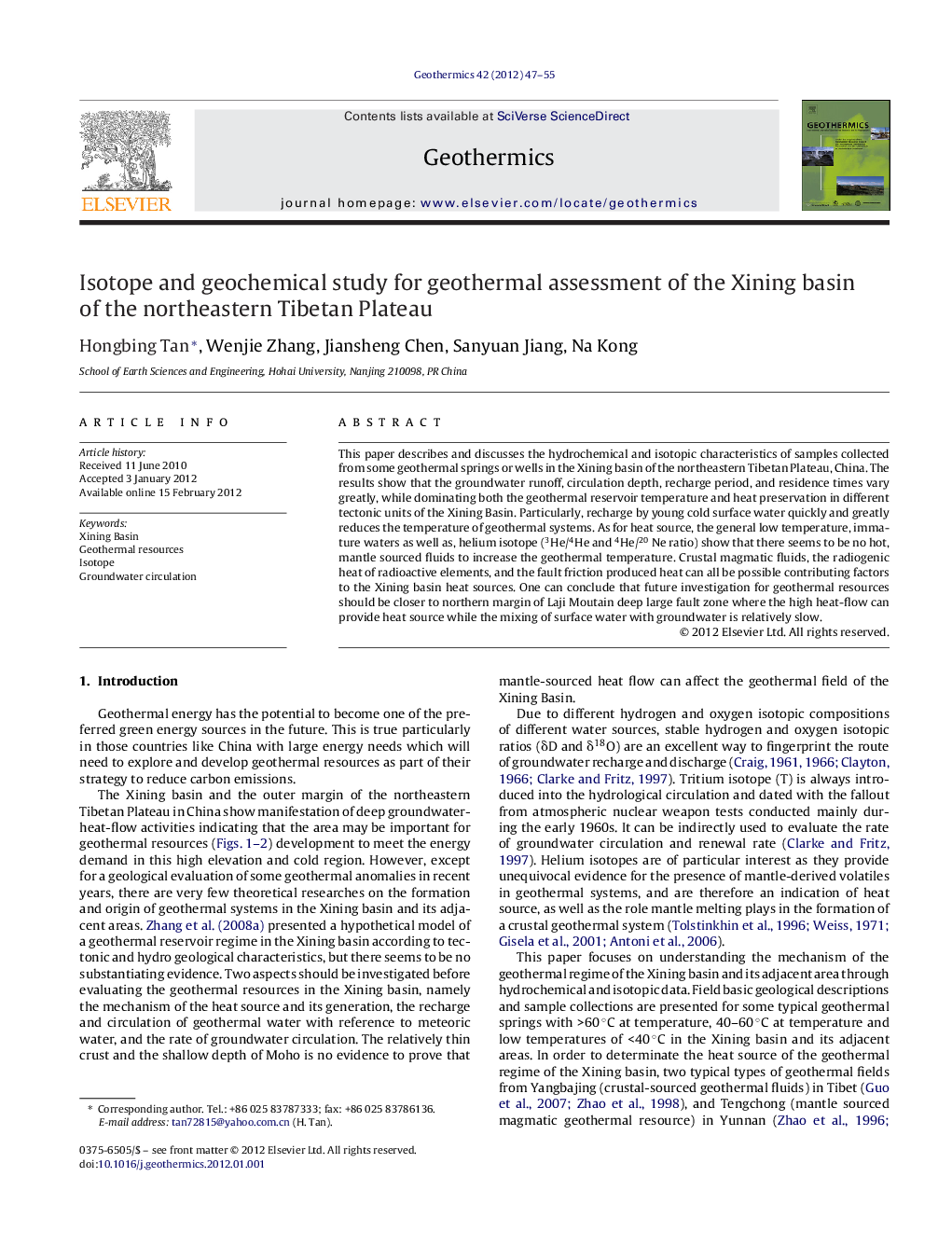| Article ID | Journal | Published Year | Pages | File Type |
|---|---|---|---|---|
| 1742516 | Geothermics | 2012 | 9 Pages |
This paper describes and discusses the hydrochemical and isotopic characteristics of samples collected from some geothermal springs or wells in the Xining basin of the northeastern Tibetan Plateau, China. The results show that the groundwater runoff, circulation depth, recharge period, and residence times vary greatly, while dominating both the geothermal reservoir temperature and heat preservation in different tectonic units of the Xining Basin. Particularly, recharge by young cold surface water quickly and greatly reduces the temperature of geothermal systems. As for heat source, the general low temperature, immature waters as well as, helium isotope (3He/4He and 4He/20 Ne ratio) show that there seems to be no hot, mantle sourced fluids to increase the geothermal temperature. Crustal magmatic fluids, the radiogenic heat of radioactive elements, and the fault friction produced heat can all be possible contributing factors to the Xining basin heat sources. One can conclude that future investigation for geothermal resources should be closer to northern margin of Laji Moutain deep large fault zone where the high heat-flow can provide heat source while the mixing of surface water with groundwater is relatively slow.
► Hydrochemical and isotopic characteristics of geothermal water in the Xining basin of the northeastern Tibetan Plateau, China have been issued. Recharge by young cold surface water reduces the temperature of geothermal systems. Crustal magmatic fluids, the radiogenic heat of radioactive elements, and the fault friction produced heat can all be possible contributing factors to the heat sources. Potential exploration for geothermal resources was prospected.
